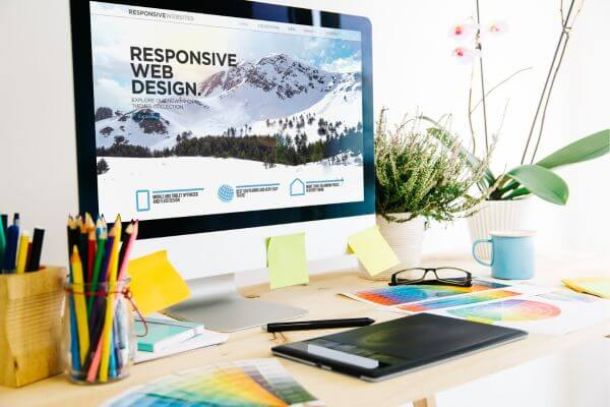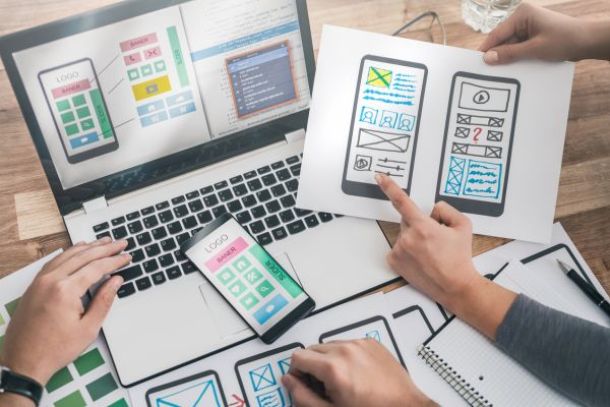Prototyping Tips: Turning Ideas into Tangible Projects
Prototyping Tips: Turning Ideas into Tangible Projects
Prototyping is a crucial step in the design process that allows designers to transform abstract ideas into tangible and testable projects. By creating prototypes, designers can validate concepts, gather feedback, and iterate on their designs before moving forward with the final product. In this article, we will explore essential tips for effective prototyping, empowering designers to bring their ideas to life and create exceptional user experiences.
Start with Low-Fidelity Prototypes
Begin the prototyping process with low-fidelity prototypes, also known as paper prototypes or wireframes. These prototypes focus on the basic structure and functionality of the design without detailed visual elements. By using sketches or digital wireframing tools, you can quickly iterate and make changes based on user feedback. Low-fidelity prototypes are cost-effective, easy to create, and facilitate early-stage testing and iteration.
Define Clear Goals and Hypotheses
Before starting the prototyping process, define clear goals and hypotheses for your design. Understand what you want to achieve with the prototype and what specific questions or assumptions you aim to validate. This clarity helps you focus your efforts and ensures that the prototyping phase aligns with your overall design objectives. Clear goals and hypotheses also provide a framework for gathering meaningful feedback and measuring the success of your prototypes.
Consider the User’s Perspective
When prototyping, put yourself in the user’s shoes and consider their perspective. Anticipate how users will interact with the design, what actions they will take, and what information they will need at each step. By empathizing with the user, you can create prototypes that address their needs and preferences. Incorporate user flows, intuitive navigation, and clear calls-to-action to guide users through the prototype and facilitate a seamless user experience.
Utilize Rapid Prototyping Tools and Software
Take advantage of rapid prototyping tools and software to streamline the prototyping process. These tools allow designers to create interactive prototypes with ease, enabling realistic user interactions and simulating the final product experience. Popular tools such as Adobe XD, Figma, or InVision offer a range of features to build interactive prototypes, including clickable buttons, transitions, and animations. Rapid prototyping tools save time and effort, allowing designers to iterate quickly and efficiently.
Incorporate Visual Design Elements
As you progress from low-fidelity to high-fidelity prototypes, consider incorporating visual design elements. Visual design helps users understand the look and feel of the final product, making the prototype more realistic and engaging. Apply appropriate colors, typography, and visual branding elements to create a visually pleasing prototype that aligns with the overall design vision. However, ensure that the visual design does not overshadow the usability and functionality of the prototype.
Conduct User Testing and Gather Feedback
User testing is a vital part of the prototyping process. Conduct usability tests with target users to observe their interactions and gather feedback. Encourage users to provide honest opinions and insights about their experience with the prototype. This feedback helps identify pain points, usability issues, and areas for improvement. Consider conducting both moderated and unmoderated user tests, as well as remote testing options to reach a wider audience.
Iterate and Refine: Prototyping is an iterative process
Use the feedback gathered from user testing to identify areas that require refinement. Implement changes and iterate on the design to address usability issues, enhance user flows, and improve overall user satisfaction. Each iteration brings you closer to a refined prototype that meets user needs and aligns with your design objectives. Embrace the iterative nature of prototyping, and be open to making necessary adjustments along the way.
Test on Multiple Devices and Platforms
In today’s multi-device landscape, it’s crucial to test your prototypes on various devices and platforms. Ensure that your prototypes are responsive and adapt well to different screen sizes, resolutions, and operating systems. Test your prototypes on desktops, laptops, tablets, and mobile devices to ensure a consistent and optimized user experience across platforms. By doing so, you can uncover any usability issues or visual discrepancies and make necessary adjustments to ensure a seamless experience for all users.
Collaborate and Seek Feedback from Stakeholders
Involve stakeholders, including team members, clients, and other relevant parties, in the prototyping process. Collaborate with them to gather different perspectives and incorporate their valuable insights. Share prototypes and seek feedback from stakeholders, as their feedback can provide a fresh and valuable perspective. Engaging stakeholders in the prototyping stage helps align expectations, build consensus, and ensure that the final product meets everyone’s requirements.
Document and Share Learnings
Throughout the prototyping process, document your learnings, insights, and design decisions. This documentation serves as a valuable reference for future iterations or when communicating with stakeholders. Additionally, share the learnings with the wider design community through blog posts, case studies, or conferences. Sharing your prototyping experiences contributes to the collective knowledge and fosters a culture of learning and growth within the design community.
Prototype Interactions and Animations
To create a more immersive and realistic user experience, consider incorporating interactive elements and animations into your prototypes. Prototype interactions such as dropdown menus, sliders, or hover effects can provide users with a sense of how the final product will behave. Animations can be used to communicate transitions, highlight important information, or provide feedback to user actions. By simulating these interactions and animations in your prototypes, you can gauge their effectiveness and refine them before final implementation.
Test Different Scenarios and User Flows
Prototyping allows you to test different scenarios and user flows to ensure the seamless navigation of your design. Consider different user journeys and test how well your prototype accommodates various user needs and goals. This could involve simulating user interactions, testing navigation pathways, or validating specific user tasks. By testing different scenarios, you can identify potential pain points, uncover usability issues, and make necessary improvements to enhance the overall user experience.
Prototype with Real Content
Whenever possible, use real content in your prototypes instead of placeholder text or images. Incorporating actual content helps provide a more accurate representation of the final product and allows users to better understand and evaluate the design. Real content also allows you to test the readability, hierarchy, and overall visual appeal of the design with authentic information. If actual content is not available, consider using realistic lorem ipsum generators or placeholder images that closely resemble the intended visuals.
Consider Accessibility in Prototyping
Accessibility should not be an afterthought. Consider accessibility principles while prototyping to ensure that your design is inclusive and can be accessed by users with diverse abilities. Implement features such as alternative text for images, keyboard navigation support, color contrast ratios, and semantic markup. Test your prototypes using assistive technologies to identify and address any accessibility barriers. By designing with accessibility in mind from the early stages, you can create designs that are usable and enjoyable for a wider range of users.
Test Prototype Performance
In addition to usability testing, it’s important to evaluate the performance of your prototypes. Monitor the loading times, responsiveness, and overall performance of the prototype, especially if it includes complex interactions or animations. Slow loading times or laggy interactions can impact the user experience and perception of your design. Optimize the performance of your prototypes by optimizing image sizes, reducing unnecessary animations, and utilizing lightweight code and assets.
Use Prototypes for Stakeholder Presentations
Prototypes can be powerful tools for presenting design concepts and ideas to stakeholders. Instead of relying solely on static mockups or verbal descriptions, use interactive prototypes to demonstrate the user experience and showcase the design’s functionality. Walk stakeholders through different user flows and highlight key features and interactions. Interactive prototypes make it easier for stakeholders to understand and visualize the design, leading to better communication, alignment, and decision-making.
Iterate Based on User Feedback
User feedback is invaluable in improving your prototypes and ultimately the final design. Actively listen to users’ feedback during usability testing and gather their insights and suggestions. Analyze the feedback and identify patterns or recurring issues. Use this feedback to inform your design decisions and iterate on your prototypes accordingly. By incorporating user feedback, you can address pain points, enhance usability, and create a more user-centered design.
Consider Aesthetic and Emotional Aspects
While prototypes primarily focus on functionality and usability, it’s important to consider the aesthetic and emotional aspects of your design. Design decisions such as color schemes, typography, and visual styles can significantly impact the user’s perception and emotional connection with your design. Use prototypes to test different design aesthetics and evaluate their impact on the overall user experience. Ensure that the visual elements align with the intended brand identity and evoke the desired emotional response from the users.
Document Prototyping Decisions
Throughout the prototyping process, document the decisions you make and the rationale behind them. This documentation serves as a reference for future iterations or when sharing your design process with colleagues or stakeholders. Documenting your prototyping decisions helps maintain consistency, enables efficient collaboration, and allows for effective communication of design choices.
Embrace Continuous Prototyping
Prototyping is not a one-time activity but a continuous process throughout the design lifecycle. As you gather feedback, iterate on your design, and make improvements, continue to prototype and test your ideas. By embracing continuous prototyping, you ensure that your design evolves based on user insights and stays aligned with the changing needs and expectations of your users.
Conclusion
Prototyping is a critical stage in the design process that allows designers to transform abstract ideas into tangible projects. By following the tips discussed, such as starting with low-fidelity prototypes, considering the user’s perspective, utilizing rapid prototyping tools, incorporating visual design elements, conducting user testing, iterating based on feedback, and considering accessibility, designers can create effective and successful prototypes. Prototyping not only helps validate and refine designs but also fosters collaboration, aids in stakeholder communication, and enhances the overall user experience. Embrace the power of prototyping to bring your ideas to life and create outstanding user-centered designs.


